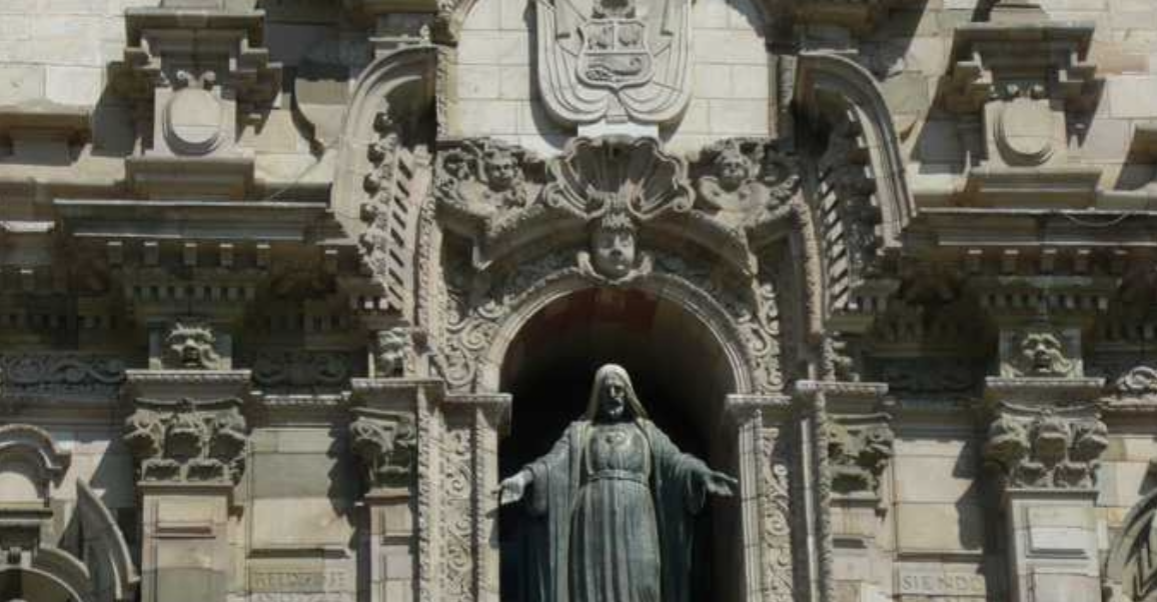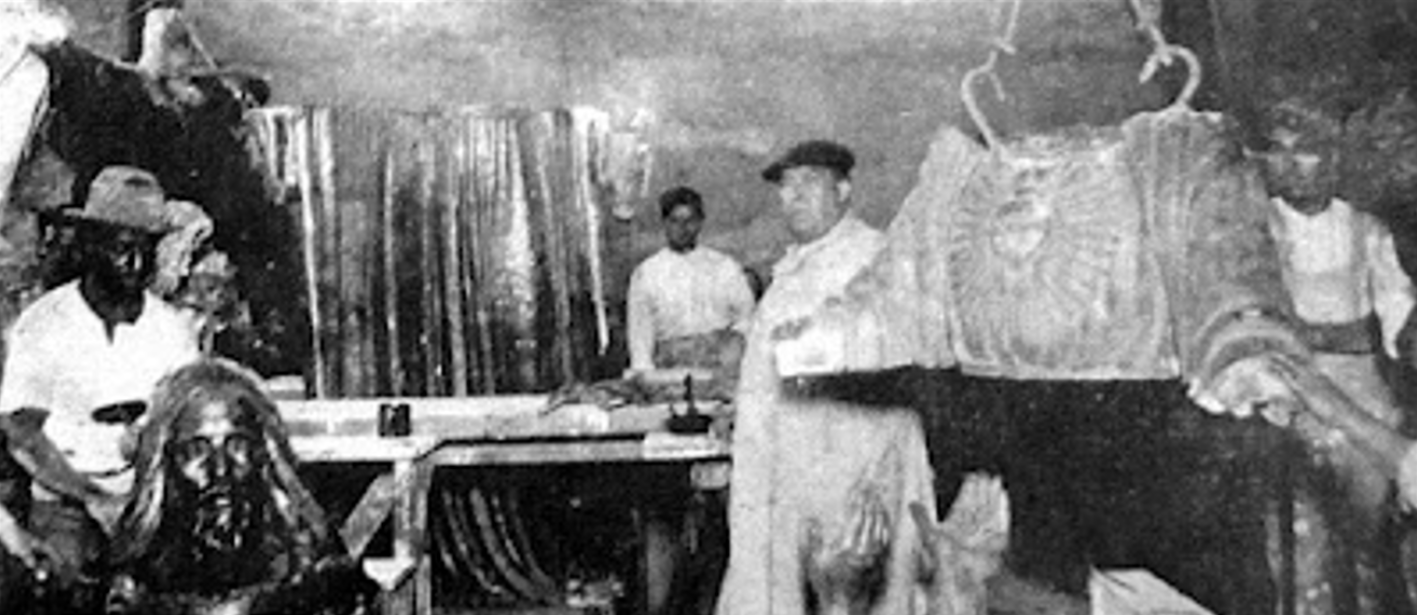By Carmen Chang,
“There is nothing that separates men more, that creates more passionate resentments and deepens the most profound abysses of hatred, than the struggle of religious ideas.”
The religious symbolism of the Sacred Heart of Jesus holds a fundamental place in Peruvian history, particularly in the 1920s. This devotion represents a religious symbol for the militant and universal Church, but also serves as a political tool and a marker of social protest. The tension surrounding this figure vividly illustrates the conflicts between the Church, the State, and civil society in Peru.
Origin and Evolution of the Devotion to the Sacred Heart
The cult of the Sacred Heart of Jesus spread throughout Catholic Europe in the late 17th century. The Spanish Crown played a crucial role in propagating this devotion to the New World. However, the expulsion of the Jesuits in 1767 marked a decline in this practice in Peru. It wasn’t until their return over a century later that the devotion was revived, particularly from 1881 onwards, when cities like Arequipa were consecrated to the Sacred Heart of Jesus.
The Sacred Heart as a Symbol of Struggle
By the late 19th century, the devotion to the Sacred Heart had evolved into a symbol of defense against those who threatened the Church. It represented a struggle against liberalism and anti-clerical ideologies. Jesuit priests like Mateo Crawley played a crucial role in spreading this cult, especially by enthroning this devotion in various public places such as schools and hospitals.

Political and Social Context of Peru
Peru in the late 19th and early 20th centuries was marked by tensions between the Catholic Church and liberal, anarchist, and Masonic movements. These groups openly criticized religion, particularly Catholicism. This ideological opposition was championed by influential figures like González Prada, who played a key role in the rise of the labor movement in Peru.
The Church, on the other hand, sought to maintain its influence by aligning with governments that respected its privileges. It supported leaders like Nicolás de Piérola, José Pardo, and Augusto B. Leguía, who in return promoted the Church’s works, facilitating the entry of new religious congregations into Peru to address the shortage of local priests and thereby strengthening the ties between Church and State.
The Consecration of Peru to the Sacred Heart of Jesus in 1923
In 1923, an attempt to consecrate Peru to the Sacred Heart of Jesus by President Leguía and the Archbishop of Lima, Emilio Lissón, sparked significant controversy. This initiative divided the country, pitting the militant Church, supported by the upper class, against a civil society increasingly influenced by liberal and anti-clerical ideals. This period, referred to as the “militant Church”, marks a pivotal moment when the Church sought to assert itself against the rise of progressive ideas.
The Decline of the Militant Church after Leguía
The end of Leguía’s mandates (1919-1930) also marked the decline of the militant Church. The rise of liberals, who sought to separate Church and State, weakened the Church’s influence on Peruvian society. These liberals were determined to abolish ecclesiastical privileges, such as tithes and religious jurisdiction, which led to protests from the clergy.
The Three Dimensions of the Conflict Surrounding the Sacred Heart

To fully understand the significance of the Sacred Heart, three perspectives must be considered:
Religious: The devotion to the Sacred Heart of Jesus represents a moral and spiritual struggle against a society increasingly liberal and indifferent to Catholic values. The militant Church saw in this figure a means to reinforce Catholic faith in the face of its detractors.
Political: The Sacred Heart was used as a political tool by leaders like Leguía, who exploited this religious symbolism to strengthen their power and legitimize their regime.
Social: This religious figure also reflected social divisions in Peru, where devotion to the Sacred Heart became a marker of identity, or even resistance, against the pressures of an increasingly secularized society.
Conclusion
The Sacred Heart of Jesus, far more than a mere religious symbol, served as a banner for the militant Church in Peru, embodying the struggle against liberal and anti-clerical forces that sought to separate Church and State. This figure played a crucial role in the political and social history of Peru in the early 20th century, symbolizing both a political power tool and a social claim against a government that did not always respect civil rights.
References
- Ara Goñi Jesús Ángel. “La Construcción de la Acción Católica en el Perú”. Pontificia Universidad Católica del Perú, Fondo Editorial, 2019.
- Callahan William J. “La Iglesia, poder y sociedad en España, 1750-1874”. Editorial Nerea, 1989.
- Définition d’intronisation. Centre National de Ressources Textuelles et Lexicales. Available here
- Définition d’intronisation. Larousse. Available here
- El « anticristo » del 23 de mayo de 1923. Con Nuestro Perú. Available here
- La Entronización del Sagrado Corazón de Jesús en los hogares. El Perú necesita de Fátima. Tesoros de la fe. Available here
- Klaiber Jeffrey. “Historia contemporánea de la Iglesia católica en el Perú”. PUCP, 2016.
- Klaiber Jeffrey. “La escasez de sacerdotes en el Perú: una interpretación histórica”. PUCP, 2014
- Klaiber Jeffrey. “La Iglesia en el Perú: su historia social desde la independencia [1a edición: 1988]”. Fondo Editorial de la Pontificia Universidad Católica del Perú, 1996.
- Palma Clemente. “Revista Variedades”. Numéro 793, datant du 12 mai 1923.




